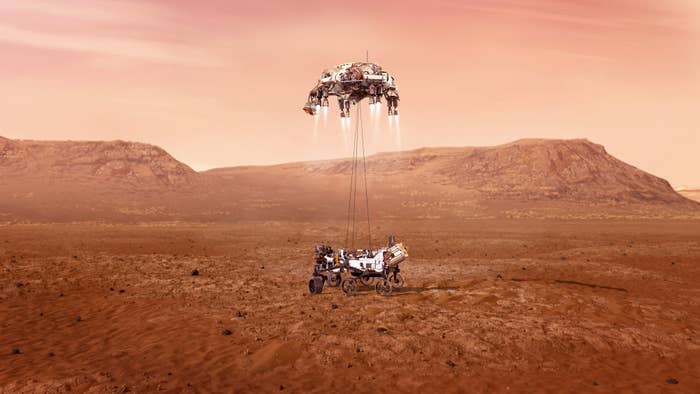
NASA’s Perseverance rover successfully landed on the surface of Mars on Thursday, starting a mission to find signs of ancient life on the planet.
NASA tweeted out the first pictures taken by the Martian rover from its landing site on Jezero Crater, which scientists believe was once a river delta. If life ever existed on Mars, scientists think this is one of the places there may be signs of it. The rover is decked out with various tools, including a coring drill and a ground-penetrating radar tool, to help answer this question.
Hello, world. My first look at my forever home. #CountdownToMars
“The most rewarding discovery I think we could make with Perseverance is finding a truly compelling ancient biosignature on Mars,” said Katie Morgan, deputy project scientist for the NASA mission. “Based on everything we know about Mars in the past, it absolutely should have been capable of supporting ancient life.”
NASA launched Perseverance on July 30, 2020, and it has been traveling the more-than-100-million-mile journey since. The last time NASA landed a rover on the red planet was in 2012 with the Curiosity rover. Curiosity is still operational and continues sending images from Mars, even today.
Scientists at NASA's Jet Propulsion Laboratory celebrating when Perseverance landed on Mars
One of the most intriguing instruments on the Perseverance mission is the Ingenuity helicopter, a small flyer that will be tested at least 5 times over 30 days as soon as the rover drives to a suitable takeoff site. If successful, the tests would be the first powered flights on another planet, opening the door to future drone exploration on Mars.

NASA has pursued a “Follow the Water” strategy for seeking signs of past life on Mars for decades, and the rover is the latest explorer in this line. While past rovers have looked for signs of once wet and habitable sites, this mission will look directly for signs of life from billions of years ago in the samples it takes from the suspected river delta it now rests on.

